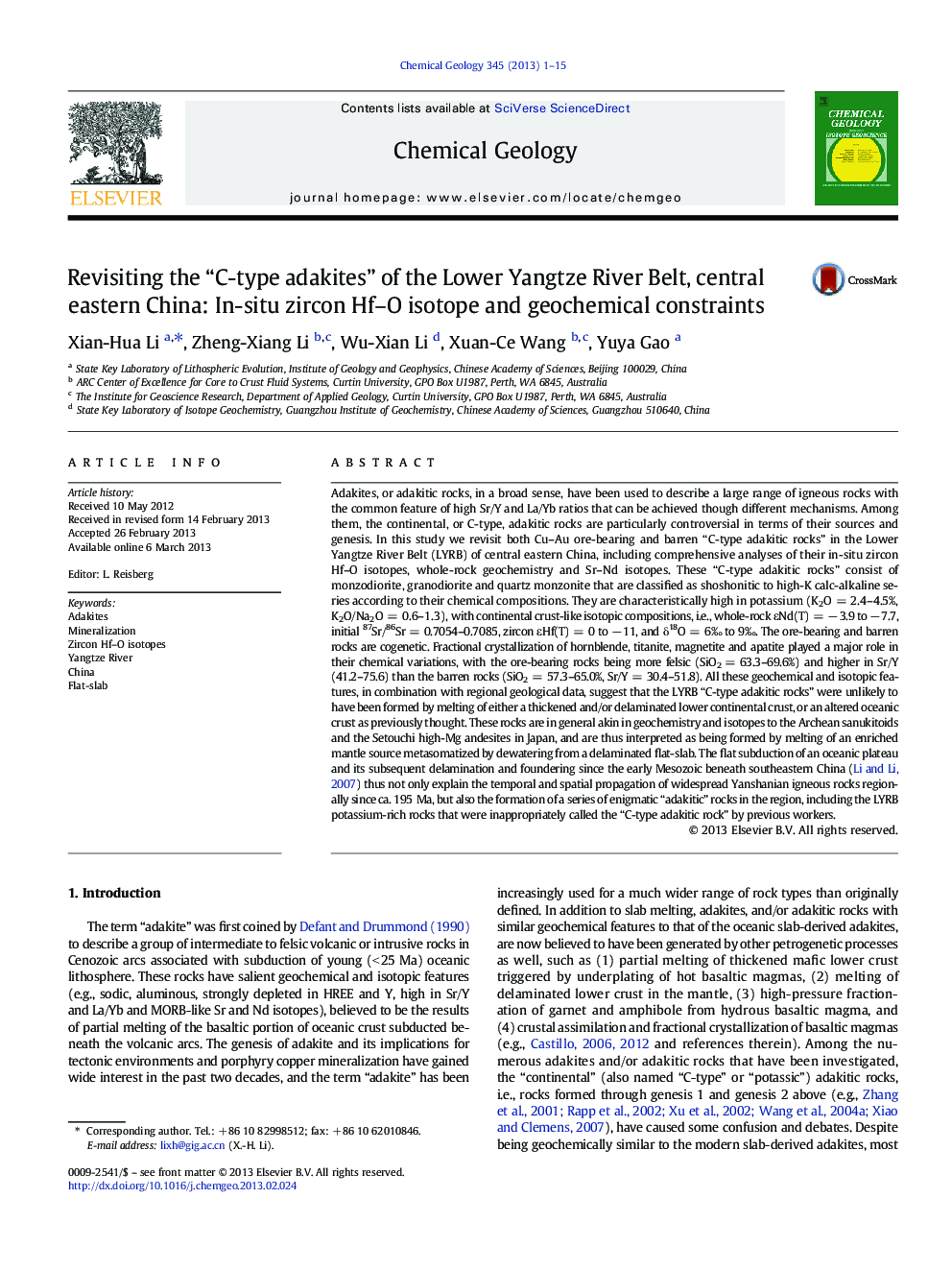| کد مقاله | کد نشریه | سال انتشار | مقاله انگلیسی | نسخه تمام متن |
|---|---|---|---|---|
| 4699052 | 1637623 | 2013 | 15 صفحه PDF | دانلود رایگان |

• We revisit China's LYRB “C-type adakites” by Hf–O–Sr–Nd isotopes and geochemistry.
• These rocks are potassium-rich monzodiorite, granodiorite and quartz monzonite.
• They are derived from an enriched mantle source, not lower crust and oceanic crust.
• “C-type adakites” are an inappropriate petrological classification for these rocks.
• Delamination of subducted flat-slab accounts for widespread 195–85 Ma igneous rocks.
Adakites, or adakitic rocks, in a broad sense, have been used to describe a large range of igneous rocks with the common feature of high Sr/Y and La/Yb ratios that can be achieved though different mechanisms. Among them, the continental, or C-type, adakitic rocks are particularly controversial in terms of their sources and genesis. In this study we revisit both Cu–Au ore-bearing and barren “C-type adakitic rocks” in the Lower Yangtze River Belt (LYRB) of central eastern China, including comprehensive analyses of their in-situ zircon Hf–O isotopes, whole-rock geochemistry and Sr–Nd isotopes. These “C-type adakitic rocks” consist of monzodiorite, granodiorite and quartz monzonite that are classified as shoshonitic to high-K calc-alkaline series according to their chemical compositions. They are characteristically high in potassium (K2O = 2.4–4.5%, K2O/Na2O = 0.6–1.3), with continental crust-like isotopic compositions, i.e., whole-rock εNd(T) = − 3.9 to − 7.7, initial 87Sr/86Sr = 0.7054–0.7085, zircon εHf(T) = 0 to − 11, and δ18O = 6‰ to 9‰. The ore-bearing and barren rocks are cogenetic. Fractional crystallization of hornblende, titanite, magnetite and apatite played a major role in their chemical variations, with the ore-bearing rocks being more felsic (SiO2 = 63.3–69.6%) and higher in Sr/Y (41.2–75.6) than the barren rocks (SiO2 = 57.3–65.0%, Sr/Y = 30.4–51.8). All these geochemical and isotopic features, in combination with regional geological data, suggest that the LYRB “C-type adakitic rocks” were unlikely to have been formed by melting of either a thickened and/or delaminated lower continental crust, or an altered oceanic crust as previously thought. These rocks are in general akin in geochemistry and isotopes to the Archean sanukitoids and the Setouchi high-Mg andesites in Japan, and are thus interpreted as being formed by melting of an enriched mantle source metasomatized by dewatering from a delaminated flat-slab. The flat subduction of an oceanic plateau and its subsequent delamination and foundering since the early Mesozoic beneath southeastern China (Li and Li, 2007) thus not only explain the temporal and spatial propagation of widespread Yanshanian igneous rocks regionally since ca. 195 Ma, but also the formation of a series of enigmatic “adakitic” rocks in the region, including the LYRB potassium-rich rocks that were inappropriately called the “C-type adakitic rock” by previous workers.
Journal: Chemical Geology - Volume 345, 8 May 2013, Pages 1–15